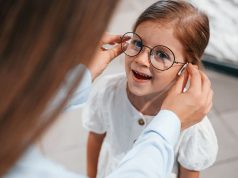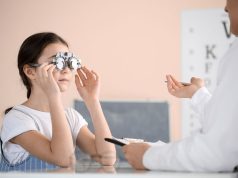Early life factors linked to myopia include maternal education, hours spent playing computer games
WEDNESDAY, Nov. 7, 2018 (HealthDay News) — Early life factors associated with myopia include maternal education, fertility treatment, summer birth, and hours spent playing computer games, according to a study published online Nov. 6 in the British Journal of Ophthalmology.
Katie M. Williams, M.B.Ch.B., Ph.D., from King’s College London, and colleagues conducted an analysis of the longitudinal U.K.-based Twins Early Development Study involving 1,991 participants recruited at birth during 1994 to 1996. Subjective refraction was obtained from optometrists at a mean of 16.3 years. Candidate myopia risk factors were weighed during critical periods of eye growth.
The researchers found that factors associated with myopia included maternal education, fertility treatment, summer birth, and hours spent playing computer games (odds ratios, 1.33, 0.63, 1.93, and 1.03, respectively). This model explained a total variance of 4.4 percent (P < 0.001), with an area under the receiver operating characteristic curve of 0.68. At multiple points during the life course, there were consistent correlations for socioeconomic status, educational attainment, reading enjoyment, and cognitive variables, especially verbal cognition.
“Given the rise in myopia prevalence, likely due to changing environmental pressures in childhood, further studies of this and other cohorts are warranted, in conjunction with genetic data, to continue efforts to produce predictive models that can ascertain who should be targeted for treatments to reduce the future burden of this condition,” the authors write.
Copyright © 2018 HealthDay. All rights reserved.








